Part 4: GONDALIERS DON’T SING AND NO ITALIAN WEDDING SOUP? A FIRST-TIMER’S DISCOVERY OF THE REAL ITALY
MEDIEVAL CITY FACED CHEMICAL WARFARE AND PEACE MAKERS WAGE WAR AGAINST POVERTY IN ORVIETO AND ASSISI
Part 3 was The Power Of Prayer And Governments Ruled Montecassino And Rome
ORVIETO, ASSISI and DERUTA
Where we stayed:
You couldn’t ask for a better central location to unpack your bags than the Grand Hotel Italia when staying in Orvieto, a medieval city built atop a volcanic butte that lies between Florence and Rome. There were inconsistencies in the water pressure, the WIFI drifted in and out, but the staff of the 46-room property did their best to make us comfortable, even to turning on the hotel-wide AC earlier than they’re used to in the season. The morning buffet was just ok, but one of the first lessons to be learned when travelling is Be Adaptable. Our group did have a private breakfast room and the front desk staffer individually prepared each coffee request. The hotel has rectangular pressed white linen hand towels in the bathrooms rather than the fuzzier towels Americans expect. Curious, we asked why. The answer is that having ironed linens is a sign of elegance and upscale luxury.
Where we dined and what we drank:
Our initial night in Orvieto was a blast. For first-time tour takers, it was a shining example of what fun can be had in a shared experience not possible when just arranging your own travel. This was our fourth tour with Odysseys Unlimited and some of these group functions are the ones we most cherish. We spent several hours at Zeppelin Restaurant & Cooking School, owned by Chef Lorenzo Polage. The restaurant, now just used for group events, resides in a 200-year old building that appears to be carved from a rock cave, especially as you gingerly descend uneven steps to the restrooms. Chef Polage has an engaging TV cooking show-ready banter while demonstrating the art of making pasta and giving us the sales pitch for his olive oil, produced from a blend of three types of olives he grows. We also drank his personal label wine, Casa Segreta. I chose the TommaSeo Rosso Umbria, a smooth table wine with a long finish that accompanied a six or seven course meal. Honestly, when you eat and drink that much between laughing, who can count courses?
The evening began with half a dozen types of focaccia and the first of many glasses of wine while Chef began preparing the pasta dough on a smooth rectangular counter. Next came a plate of several slices of Italian meats, cheese, watermelon, and faro salad with fresh strawberry slices. Of course, as is the norm on group tours, people with food challenges are given alternative selections. Chef made us laugh when he questioned Italian-American dishes that he claims do not exist in authentic Italian kitchens, such as chicken parmesan, Alfredo sauce, and spumoni.
When done kneading and rolling out dough, he called for several individuals to come up and assist cutting pasta into various widths. I excitedly was one of those people. We sliced, we laughed, we held up our finished raw strings of pasta dripping from the cleaver.
Our next course was fettuccini pasta with a light marinara coating. Not having ladles of bubbling sauce atop my pasta was unexpected, but whenever served pasta on this trip, it was always a minor coating already stirred in. The next course was a dish termed “beef stew.” It was cold shredded beef sitting in the indentation of a potato cheese tart shell. Plated alongside were slices of seasoned eggplant. Dessert was a cake I’d term “Tiramisu on steroids.” It was melt-in-your-mouth delicious. But wait… there’s more. The meal was finished (and so were we!) with espresso and either limoncello or amoretto. A couple days later, we encountered Chef at the farmer’s market affirming that he plans his menus around whatever is fresh.
Orvieto is an Italian wine area located in Umbria and Lazio regions, but Orvieto’s reputation for fine white wines has been ongoing since the Middle Ages, especially for its Orvieto Classico. Originally a sweet, golden yellow, today’s white Orvieto is dry in a semi-sweet style. Traditional Orvieto white wines are a blend of four local grapes: Grechetto, Procanico (Trebbiano), Verdello (Verdelho), Drupeggio (Canaiolo Bianco) and/or Malvasia Bianca.
Another local wine we enjoyed was Barberani Foresco, with strong notes of cherry and a pleasant long finish.
A signature sandwich in the area is called porchetta. It’s slow-cooked heavily-salted pork with fennel that is sliced thin and then stacked into a sub-style crunchy roll.
One night six of our group dined at Osteria da Mamma Angela, across the piazza from our hotel. Even though a week night, the restaurant was packed. We were hungry and unwilling to wait long, but one of the staff escorted us to the outside covered patio, wiped off chairs earlier rained upon, wrapped red flannel blankets around Eileen, Cherryl and I to ward off the evening damp, and then gave us crunchy bread and a complimentary bottle of wine to enjoy while we waited. That wine, an Umbria merlot 2010 was something you might get in any pizza restaurant, but then we ordered an Umbria Trentanni 2014 Famiglia Cotarella, a full-bodied.Sangiovese. I ate spinach ravioli accompanied by delicately-grilled tomatoes, an excellent julienned radish salad with chopped pear and walnuts. Fabulous. Ended the meal with tiramisu topped with shaved chocolate.
The afternoon visit to Assisi was short, but informative. By the time we ducked down under the rock archway into the cool, quiet cave-like realm of Ristorante Monte Frumentario in Assisi, I was hungry for something other than pizza and pasta. I had a perfectly seasoned and crispy skin half-chicken with roasted potatoes that hit all my positive buttons for a wonderful meal. I drank a pleasant table wine that didn’t overshadow the chicken. Russ ate pesto spaghetti and drank a Peroni beer. The meal was inexpensive. The staff spoke little English but service was prompt, the food hot, and the atmosphere quite relaxing.
What we saw:
Five hundred years BC, the Etruscans began building caves underneath Orvieto. Most of the upper parts of the mountaintop city based atop volcanic rock were erected in the 14th to 16th centuries. Excavations have uncovered more than 1200 handmade caves, built to combat Romans, but not enough food and water were available to sustain the populace, so businesses were relegated to the underground. Post-Etruscan control, the growing populace discovered they could mix the volcanic ash with water and shale, creating mortar, used to support some of the caves, but the construction of support columns was not sturdy enough. After an earthquake, many caves were rediscovered, as were some water wells were also unearthed, each exactly 25 meters down and the exact same size.
We carefully entered one of two cave locations open for touring. Our local guide pointed out the remains of an old olive press and a pigeon coop that “farmed” pigeons as food. Pigeons still appear on Orvieto restaurant menus. All of our group ventured into the first damp cave, but only a handful agreed to enter the second location where one would have to bend over to move under the low ceiling.
Stunning to look at, the Orvieto Cathedral (Cattedrale di Santa Maria Assunta) is a large 14th-century Roman Catholic cathedral dedicated to the Assumption of the Virgin Mary. Our friend Judi visited there 40 years ago but still vividly remembers the gold in the exterior frescoes emanating a heavenly radiance at sundown. We didn’t see it at sundown, but the Gothic mosaic façade is considered a masterpiece of the Middle Ages. Bas-reliefs depict Biblical stories of the New and Old Testaments. Three ornate bronze doors were just added in in 1970 by the Sicilian sculptor Emilio Greco. This Cathedral is gorgeous, in and out, with paintings, sculptures, and Gothic architectural effects, but what immediately struck me were cylindrical black-and-white columns of alternate rows of travertine and basalt that reminded me of the Moorish influence of churches converted from mosques in Spain.
The drive from Orvieto to Assisi in the Umbria region took about one-and-a-half hours on back roads.
We learned some interesting facts along the way about Umbria, one of the few Italian regions that is landlocked. Umbria has the highest number of women CEOs, mostly of family-owned businesses. Olive oil production is a major export, with flavored extra virgin and truffle oils topping the varieties. Umbria is known as the “green heart of Italy.”
Assisi has been a walled city since 1365. There are eight entrances, each with a crenellated arch, which meant that they supported the Emperor.
Before this trip to Italy, I knew of St. Francis of Assisi as a man of peace who is always pictured in paintings as conversing with birds, but I was unaware of much more. I didn’t know of his birth to a rich merchant family in 1182 or that he was a wild party guy who disappointed his father. While a Knight fighting in the War against Perugia, he was captured and imprisoned for a year, giving him time to reconsider his life. The result is that he took a vow of poverty and repurposed his life towards aiding those in need. His subsequent devout life attracted many followers, chief among them, a woman eight years his younger who became known as St. Claire (sometimes written as Clare). She became the first woman to co-write rules for the Church. The city of Assisi contains churches dedicated to each of them, both of which we visited.
The Papal Basilica of Saint Francis of Assisi (Basilica Papale di San Francesco) is the mother church of the Roman Catholic Order of Friars Minor Conventual in Assisi. A UNESCO World Heritage Site since 2000, the Basilica remains one of the most important places for Christians to take pilgrimage. The Cathedral was begun in 1228 and contained both an Upper Church and a Lower Church. Although an earthquake destroyed much of the Church, the Lower Church and many of the frescoes by Giotto and Pietro Cavellini were not destroyed. Our local guide informed us that it was in the Basilica that we see the invention of 3D art; ie, showing more realistic physical characteristics in a more natural way. The guide explained that it was another 100 years later, in Florence, that paintings took on a more codified, mathematical structure. There are 16 stained glass windows in the Basilica depicting St Francis’ journey. They are reportedly the first known examples of stained glass in a church.
On our return from Assisi to Orvieto, we detoured to Deruta, a city of 5,000 in the Province of Perugia that is eight centuries old and known internationally for hand-painted and crafted ceramics produced by family studios. The area is rich in clay which local factories purify and soften. Silly me: I bought a ceramic-handled pizza cutter that lay forgotten in the wrapping and paper bag until I got to the airport, where it was promptly confiscated. Since I’ve been back from Italy I have seen Deruta pottery, which is always signed and dated as authentication by the family who created it, at outdoor garden shops and home good stores. The best known product from Deruta is a chicken-themed jug. Owning it is supposed to bring good luck. Maybe I should have bought one of those instead of a pizza cutter!
What we learned:
The art of chemical warfare may well have been invented in Orvieto. Every town was once ruled by powerful families, so of course, greed and politics meant neighboring areas were battling each other for territory. Ovieto’s impregnable rock defenses were a challenge, so one eager invading army catapulted dead animals over the walls. The residents couldn’t return them over the wall or risk a barrage of flying arrows, so the animals lay rotting, bringing with them vermin, odors and disease.
As Russ and I have learned in our travels, many regions have signature desserts. Orvieto is famous for Brutti E Buoni, hazelnut cookies also called the ugly-and-good for their shape that resembles a round apple fritter. Cantuccini are crescent shaped cookies with almonds. Most of the cookies in the Umbria area contain hazelnuts, almonds and pine nuts.
Another popular dessert is called Vin Santo, meaning Holy Wine. You dip a biscotti cookie into fortified wine (17-18% alcohol) until it softens enough to eat it, much as we might do with biscotti in coffee or milk.
Next: Part 5 – THE CLASSICAL BEAUTY OF TUSCANY, THE ELEGRANCE OF FLORENCE AND SAN GIMIGNANO’S TALL TOWERS
www.grandhotelitalia.it
www.ristorantezeppelin.com/#!
www.osteriadamammaangela.it/
Karen Kuzsel is a writer-editor based in the Orlando area who specializes in the hospitality, entertainment, meetings & events industries. She is an active member of ILEA and MPI and is now serving on the 2017 – 2018 MPI Global Advisory Board for The Meeting Professional Magazine for the third consecutive year. She is a member of the Society of Professional Journalists. Karen writes about food & wine, spas, destinations, venues, meetings & events. A career journalist, she has owned magazines, written for newspapers, trade publications, radio and TV. As her alter-ego, Natasha, The Psychic Lady, she is a featured entertainer for corporate and social events. karenkuzsel@earthlink.net; www.ThePsychicLady.com; @karenkuzsel; @thepsychiclady.
Photos by Russ Wagner, a retired government planner/builder who has a passion for trains, travel and taking photographs.

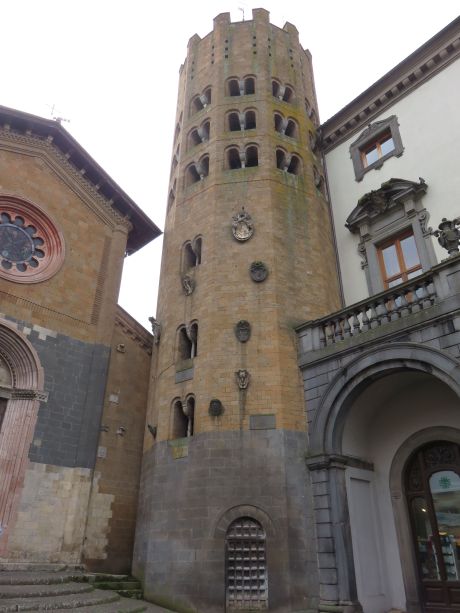


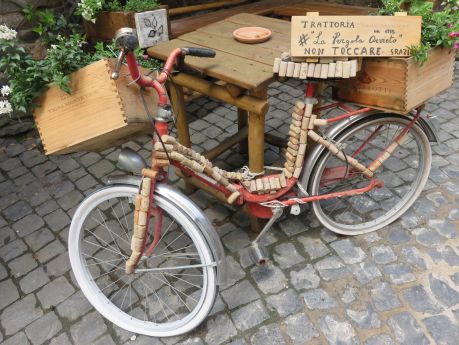

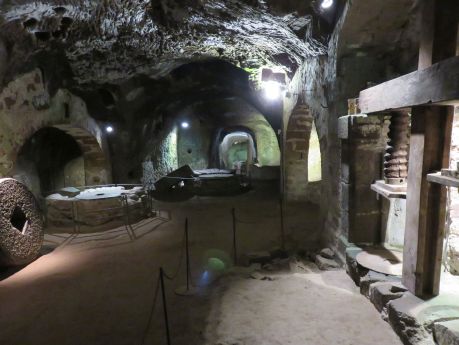


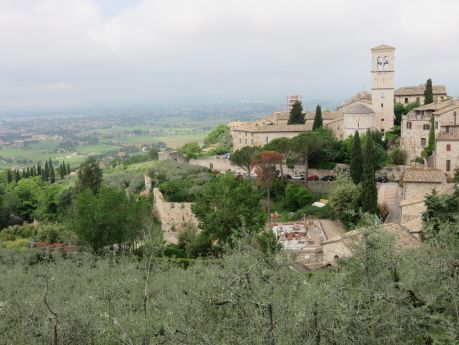


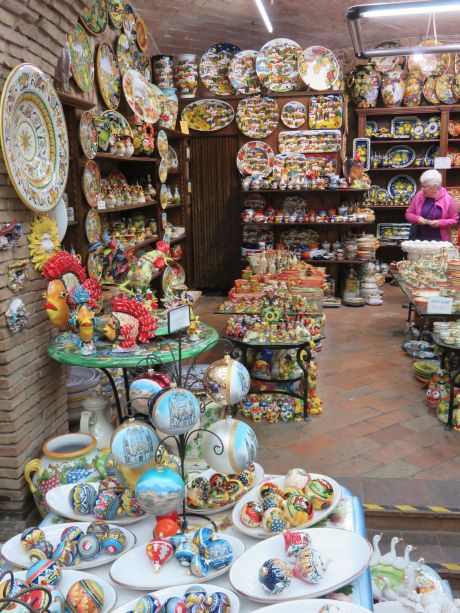
Leave a Reply
Want to join the discussion?Feel free to contribute!